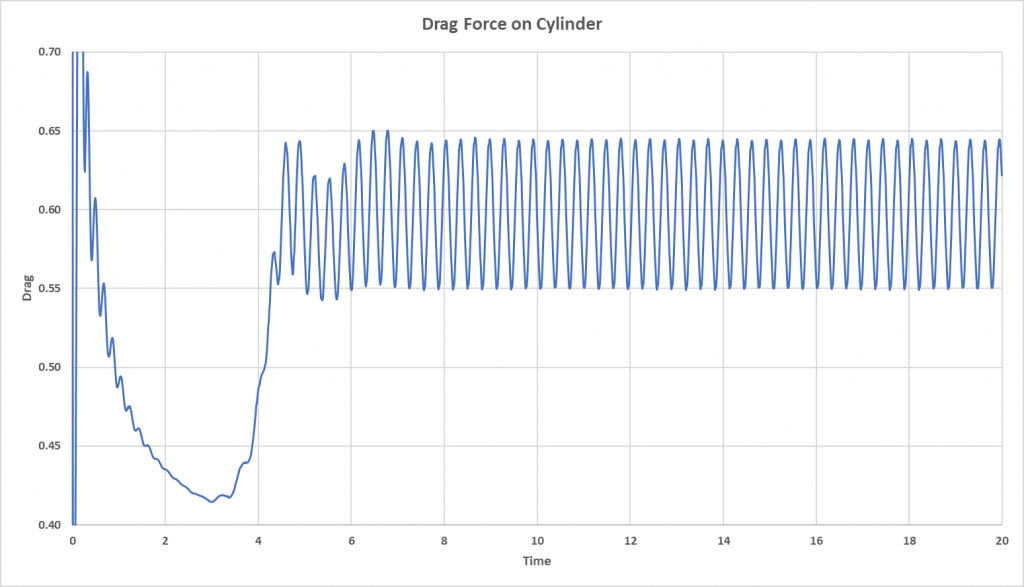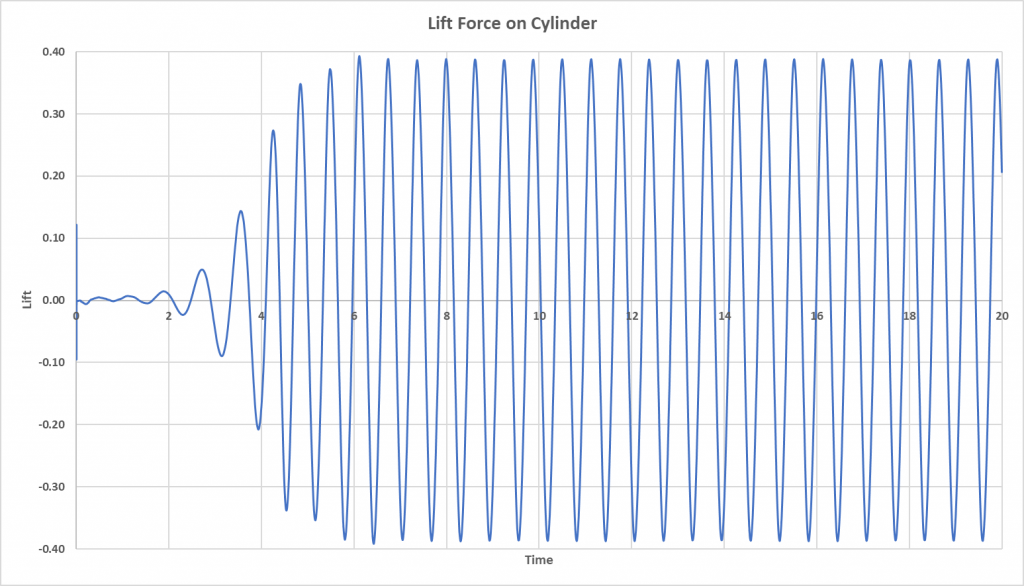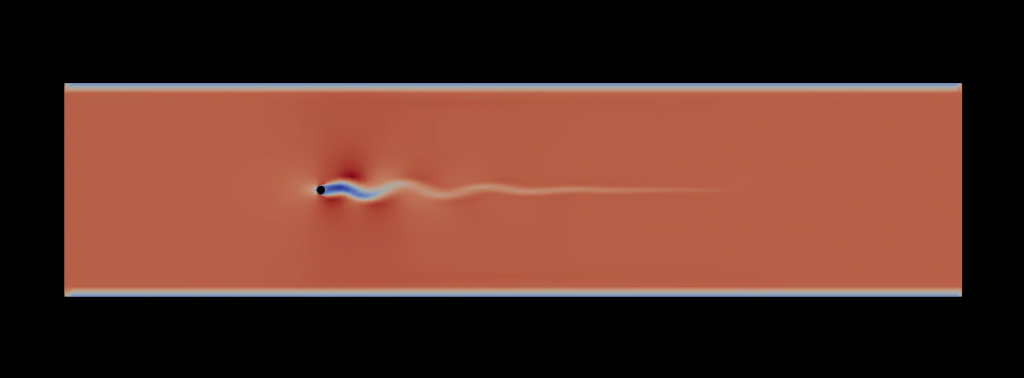Introduction
The von Karman vortex street is a well-known phenomenon in fluid dynamics, characterized by a repeating pattern of swirling vortices formed as a fluid flows past a bluff body, such as a cylinder. Understanding this phenomenon is crucial for many engineering applications, including aerodynamics, structural engineering, and environmental fluid mechanics. In this blog post, we will simulate the von Karman vortex street using OpenFOAM 11, a widely-used open-source CFD software, and analyze the results.
Simulation Setup
We set up a simulation with the following parameters:
- Cylinder Diameter: 0.04 meters
- Channel Width: 4.2 meters
- Channel Height: 1 meter
- Inlet Velocity: 0.5 m/s
- Solver: incompressibleFluid
Boundary Conditions:
- Upper and Lower Wall: No slip condition, meaning the fluid velocity at these boundaries is zero relative to the wall.
- Cylinder: No slip condition.
- Inlet: Fixed velocity of 0.5 m/s.
- Outlet: Fixed pressure value of 0.
These boundary conditions ensure that the fluid enters the domain with a constant velocity, interacts with the cylinder, and exits the domain with a specified pressure.
Running the Simulation
To run the simulation in OpenFOAM 11, follow these steps:
- Geometry and Mesh:
- Define the geometry of the channel and place the cylinder within it.
- Use a meshing tool, such as
blockMesh, to create the computational grid. The mesh should be fine enough to capture the details of the vortex shedding.
- Configuration Files:
- blockMeshDict: Define the mesh structure and geometry parameters.
- controlDict: Set the simulation parameters such as start time, end time, and time step size.
- fvSchemes: Specify the discretization schemes for the equations.
- fvSolution: Configure the solvers and tolerances for the simulation.
- Boundary Condition Files (0 directory):
- U: Define the velocity boundary conditions.
- p: Define the pressure boundary conditions.
- Run the Solver:
- Use the following command to execute the simulation: blockMesh and then foamRun
- Monitor the simulation progress and ensure that the residuals are decreasing, indicating convergence.
Results and Analysis
After running the simulation, we obtain several key results:
Velocity Field: The generated video showing the velocity field around the cylinder. This video clearly illustrates the formation of the von Karman vortex street, with alternating vortices being shed from the cylinder.
Drag Force: The drag force experienced by the cylinder was recorded over time. The graph below shows the drag force, which initially decreases and then stabilizes with periodic fluctuations. These fluctuations are due to the alternating vortex shedding, which creates varying pressure distributions around the cylinder.

Lift Force: The lift force on the cylinder was also measured. The graph below shows the lift force over time, which oscillates as a result of the periodic vortex shedding. The alternating high and low pressures on opposite sides of the cylinder cause these oscillations.

Last Word!
For those eager to replicate this study, grab the configuration files from GitHub and start exploring. Download the configuration files here:
Simulating the von Karman vortex street using OpenFOAM 11 has been an exciting journey through the world of fluid dynamics. 🌊 By observing the periodic vortex shedding and analyzing the resulting drag and lift forces, we gain valuable insights into fluid-structure interactions that are critical for engineering applications. 🛠️ Whether you’re designing bridges, aircraft, or understanding environmental flows, these simulations are a powerful tool in your arsenal. 🔧 Dive into the world of CFD with OpenFOAM, and let your curiosity flow! 🌟 Happy simulating! 🚀

